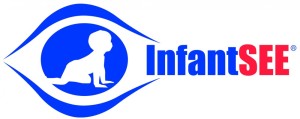By Dr. Ann Rea Miller
Children’s vision has always been something I’ve actively participated in since graduating optometry school. Presenting RealEyes to children in schools and seeing babies 6-12 months through the InfantSEE program just seemed like something I needed to be involved in. It seemed natural to me that optometrists should focus on kids vision with our knowledge that 80% of what we learn is through our eyes. Having poor vision while children are in school can lead to poor grades, children who become disruptive because they can’t see what is being taught, get bored and may be unable to verbalize their problems. Kids may even be misdiagnosed with ADHD or unnecessary IEPs may be issued which could potentially cause unnecessary emotional turmoil for children and/or their families.
So many times after I examine a child and tell their parent(s) about the problem I’m finding with the child’s eyes, the parent(s) are shocked because their child did not tell them they were having problems. Parents feel guilty and beat themselves up about why they didn’t take their child to see me sooner. We all know that some people tolerate all kinds of blur without complaining, especially children who do not have expectations of what their vision should be. I love that we, as optometrists, are able to have a positive impact on these children’s lives and allow them clarity through contact lenses or glasses to function at a higher level.
I have done many RealEyes presentations since graduating. Some go better than others and just when you feel like the students may not have gotten the message as well as I was intending, I get clarity to my own perceptions of what the children really got out of my presentations.
Recently I presented to a school and really was concerned that the children may not have gotten the messages I was trying to teach them about their eyes, vision, and getting their eyes checked yearly to keep their eyes healthy. After my presentations that day, I really started to question whether I should have spent my time that day versus seeing patients and making money, or spending time with my son. My questioning was put to a halt when I received over 20 thank you letters from kids who wrote to me about what they enjoyed when I was in their classroom and the favorite thing they learned about their eyes…they really had paid attention! We need to remember that kids’ brains are like sponges and they soak in so much knowledge. We need to remember that kids are our future.
We need to take the time to educate them on the importance of their vision and eye health. It amazes me how often I have a child who comes into the office because they have told their parent(s) about what they learned through my presentation and the child was made aware of what blurry vision was and they realized they were experiencing it. Our goal should be to examine all young children and treat vision problems when needed, therefore allowing children the ability to learn more easily by having clear vision. I urge everyone to take the time to impact young kids’ lives through RealEyes and InfantSEE to provide the knowledge and expertise we are able to provide. As a bonus, remember that one day the children you impact (and the rest of their family) may become your patients in the process.



 By Jason Miller, OD, MBA – InfantSEE®, the American Optometric Association’s public health program to provide comprehensive eye assessments to infants in the first year of life at no cost, has firmly taken root since its introduction in the summer of 2005. How can optometrists best promote this public health program in their communities?
By Jason Miller, OD, MBA – InfantSEE®, the American Optometric Association’s public health program to provide comprehensive eye assessments to infants in the first year of life at no cost, has firmly taken root since its introduction in the summer of 2005. How can optometrists best promote this public health program in their communities?

 One tenth. 10%. It may not seem like a lot. Ohio volunteer doctors do one tenth of all the InfantSEE exams reported in the United States. In 2012, Ohio doctors reported 1,095 InfantSEE exams; a total of 11,451 InfantSEE exams were reported in the country. Throughout the eight-year history of InfantSEE, 97,267 InfantSEE exams were reported by Ohio ODs throughout America. Ohio ODs reported 9,520 InfantSEE exams, I assume Ohio will go over the 10,000 mark for InfantSEE exams in 2013; I also assume the 100,000 mark will be eclipsed in the United States.
One tenth. 10%. It may not seem like a lot. Ohio volunteer doctors do one tenth of all the InfantSEE exams reported in the United States. In 2012, Ohio doctors reported 1,095 InfantSEE exams; a total of 11,451 InfantSEE exams were reported in the country. Throughout the eight-year history of InfantSEE, 97,267 InfantSEE exams were reported by Ohio ODs throughout America. Ohio ODs reported 9,520 InfantSEE exams, I assume Ohio will go over the 10,000 mark for InfantSEE exams in 2013; I also assume the 100,000 mark will be eclipsed in the United States.






